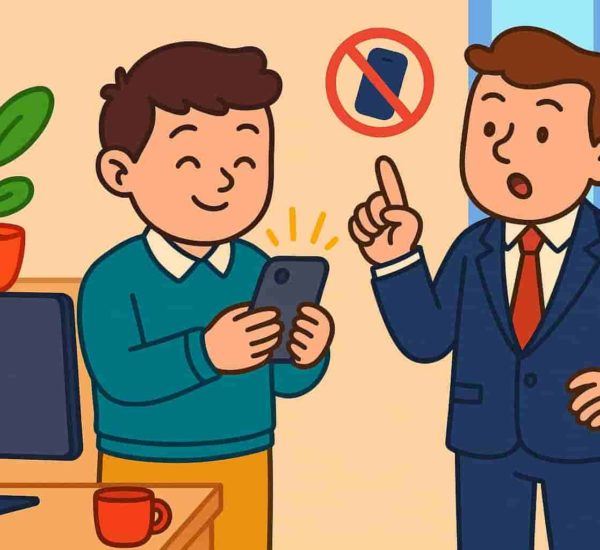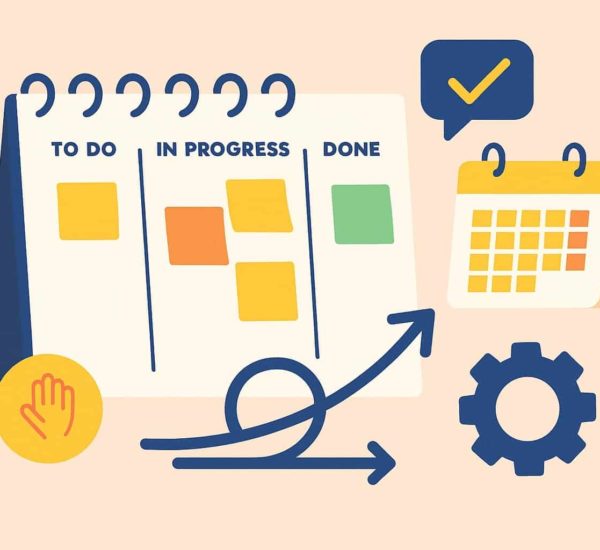According to a survey by Gallup, only 13% of employees are engaged in their work. The survey revealed that very few employees are psychologically committed to what they’re doing and making positive contributions to their organizations. In such cases, an organization looks for ways in which it can increase an employee’s interest and engagement in their job.
One such method is job enrichment.
Job enrichment focuses on adding more to a job in order to make it more interesting for the employees. There are several benefits of doing this which we share in later sections. Job enrichment is important for those employees who are keen on adding more value to their customers or clients. Such employees like to work in challenging situations.
In this article, we focus on job enrichment, its benefits, and a little bit on job enlargement. Additionally, you will go through the differences between the two to help you clear the concept.
What is Job Enrichment?
Job enrichment is a part of job design that focuses on adding certain skills, extra tasks or making the job a little more interesting to make it more motivating.
The purpose of job enrichment in HRM is to make a boring job more appealing to the employees to help them engage in it. It involves adding motivational factors to a job to increase employee satisfaction and motivation.
The idea of job enrichment is strengthened by Frederick Herzberg who gave his two-factor theory of motivation in 1959. Let’s take a deeper look at it below:
Two-Factor Theory of Motivation
According to this theory, some factors like praise, recognition, the job nature, or a sense of achievement add more meaning to a job. These factors are called motivators that allow employees to do their job with satisfaction. The absence of certain factors results in job dissatisfaction. These are known as hygiene factors.
A few examples include salary, job security, work conditions, and company policies. The absence of these hygiene factors, according to him, is likely to minimize satisfaction in employees regarding their job. An ideal situation for the workplace is to have high motivation and high hygiene.
The Job Characteristic Model
Another model given by Hackman and Oldham in the 1980s solidifies the idea of enriching the idea. According to the model, the task itself determines whether employees will be engaged in doing it or will be dissatisfied. In other words, a boring task will unlikely motivate an employee to finish it while a versatile and challenging task will urge the employee to finish it with satisfaction.
Benefits of Job Enrichment
So how does job enrichment benefit employees and employers? Let’s take a look at some pros below:
For Employees
Makes Work Interesting
Enriching the jOb makes it more interesting and motivating. In this way, employees work to actually add value to the organization instead of wanting to quit every day. They feel more recognized and develop a sense of accomplishing something.
Helps Them Stay Focused
When the job is interesting, employees are more focused and work keenly. Job enrichment offers autonomy over tasks. When this happens, employees feel valued and are more loyal to the company.
Chance to Improve
Feedback is an important part of job enrichment. With feedback employees get a sense of where they lag and how they can improve in certain areas.
For Employers
Increases Retention
One of the biggest upsides of job enrichment is that it increases employee retention. When employees enjoy doing their job, they hardly feel the need to change it or quit. Job enrichment makes sure to add more skills and tasks to keep it more interesting and engaging. A study showed that job enrichment increases employees’ loyalty towards the organization in a downsizing environment hence increasing retention.
Reduces Turnover
Increased retention ultimately means a reduced turnover. Turnover can be hard on a company and therefore it needs to be balanced. Job enrichment is a great way to decrease the percentage of employees leaving an organization.
Meaningful Work
Managers who advocate job enrichment focus on creating jobs with more versatility, autonomy, and skills. This means more productive and meaningful work from employees.
Better Employee Experience
Work done with motivation means better employee experience. Job enrichment is a good way to make sure employees are satisfied and happy with what they are doing.
11 Job Enrichment Techniques
Now that you’ve established a good understanding of job enrichment, let’s see some ways to enrich a job:
Job Rotation
Job rotation involves moving an employee from department to department in order to enhance their skills and get wider exposure. This adds more variety and versatility to an employee’s job. Rotating the job is a great way to break the monotony and get rid of repetitive tasks.
Job Crafting
Job crafting is the process of redesigning a job in order to change perceptions about a job, making small changes to tasks, and focusing on bettering relationships with others. This process adds more to enrich the job.
Feedback
Make sure employees make the best use of the feedback they’re provided. Feedback is aimed at making work better for the employees and helping them increase the value of their work. Therefore, feedback is a great way to enrich a dull and boring job.
Combine Tasks
When one task sounds boring, combine it with another. One major benefit of this technique is that the employees will find their combined tasks more challenging. Therefore the urge to complete this challenge will motivate them to finish the task.
One example is Corning Glass Works, a laboratory hotplate assembling plant. Instead of doing separate tasks of assembling, inspecting, and shipping, each operator was asked to combine tasks. As a result, every operator could gather, inspect and deliver a hotplate. In this way, every operator felt valued because of the autonomy they practiced.
Suggestions from Others
If you are looking for ways to enrich a job, ask others for help. Suggestions from others will bring in different perspectives and a broader sense of viewing things. Employees too can ask for suggestions from others to make their work more meaningful. The purpose is to improve the work quality and improve their overall performance.
Practice Autonomy
To make a job richer, motivate your employees by giving them autonomy and control over certain things. When employees are given a sense of control over things, they feel valued and think you consider them trustworthy enough to finish important tasks without much supervision.
Try Automating Tasks
Most paperwork is boring. For instance, dealing with payroll manually is boring. For such tasks, think about if you can automate them for your employees. When most of the tasks will be automated, they will have more time on their hands to focus on other interesting and high-priority tasks.
Get Rid of Worthless Tasks
How many tasks do your employees work on that don’t provide much value to the organization? For example tasks like organizing files and paperwork just in case someone needs that in the future. We all know we rarely use something like that later.
So take some time out and encourage your employees to get rid of useless tasks. It will help them develop a sense of how few meaningless tasks they have on their plate now. This is a good motivator to get important things done faster.
Surveying
Surveys are a good way to enrich jobs. When you survey, you don’t assume what a particular job lacks and what can be done to add more meaning to it. Instead, you ask the real audience i.e your employees.
On the survey, include questions like:
- What makes them happy?
- What would they like to change about the job?
- Which other skills would they like to learn?
Based on the results, makes changes to the job description. Surveying is therefore a good practice to make a job richer through employee feedback.
Encourage Them to Enrich
Sometimes, you may not have the time to add more to a job to enrich it. In times like this, ask your employees to see ways how they can enrich their jobs for themselves. This includes for example encouraging them to join a few classes and learn new skills. This will help them in working with a new skill set in a fresh way.
Incentive Programs
In some cases, setting a reward for completing a certain task is a great motivator for employees. Paid recognition gives them a sense of accomplishment and motivates them to achieve more.
What is Job Enlargement?
Job enlargement is the process of extending the job duties and responsibilities to the same levels of skills and responsibility. It is a horizontal expansion of the job duties but isn’t focused on providing more autonomy to the employees.
Let’s see its differences with job enrichment in the text below:
Job Enlargement and Job Enrichment
The difference between job enrichment and job enlargement is that:
Nature
Job enrichment is a vertical expansion of an employee’s duties whereas job enlargement is a horizontal expansion of the duties and responsibilities.
Purpose
The major function of job enrichment is to make a job less boring, more lively, and interesting to keep the employees engaged and motivated. On the other hand, job enlargement focuses more on reducing monotony in doing certain repetitive tasks.
Autonomy
For job enrichment employees use their own sense of direction and control. In job enlargement, they do not necessarily rely on their own sense of direction and may need external help. In other words, there is a higher degree of control in job enrichment as compared to job enlargement.
Motivation
Job enrichment in HRM is considered more motivating and its purpose is to make the job more challenging for the employees while job enlargement isn’t as motivating for employees.
Engagement
Tasks in job enrichment are given to make the job more interesting. In job enlargement, tasks of similar nature are given which rarely makes it more engaging.
Job Rotation
Job rotation is usually a part of job enlargement. Horizontal job enlargement refers to the process of moving an employee from one department to another. The purpose of this is to increase their understanding of how things work, to increase their experience, and to prepare them to perform a broader role at the company.
Cost
Job enrichment is more costly because it calls for training the employee and that requires resources. On the other hand, job enlargement is relatively cheaper because, in this process, many duties are performed by a single employee.
Examples of Job Enrichment and Job Enlargement
Job Enrichment
Consider an employee in the marketing team at an organization who’s been generating content for more than two years. They realize that they’re bored and decide to tell the HR manager.
To make the job less boring, the manager gives them some autonomy over tasks and other employees in the same team. Now their job involves interviewing new hires in the same department, reviewing other writing pieces, editing them, and optimizing the content for conversions.
This increases job enrichment with more responsibility and upskilling. They will feel more motivated to work and finish their tasks.
Job Enlargement
A practical example of job enlargement is a salesperson whose job is to generate sales. A few months later, as a part of job enlargement, they begin to collect payment and deliver orders apart from generating sales.
In this way, to increase engagement, the managers expand their responsibilities without giving complete autonomy to them.
The Bottomline
Job enrichment is a major part of attracting, engaging, and motivating your employees to do a task. It is especially important to make a job rich with motivational factors if you want to retain talented employees. When there’s a variety in the jobs of talented and ambitious employees, they are more likely to stay with an organization. Their satisfaction levels are also higher. As a manager, you should figure out how to enrich a job in order to increase job satisfaction and productivity in employees.







